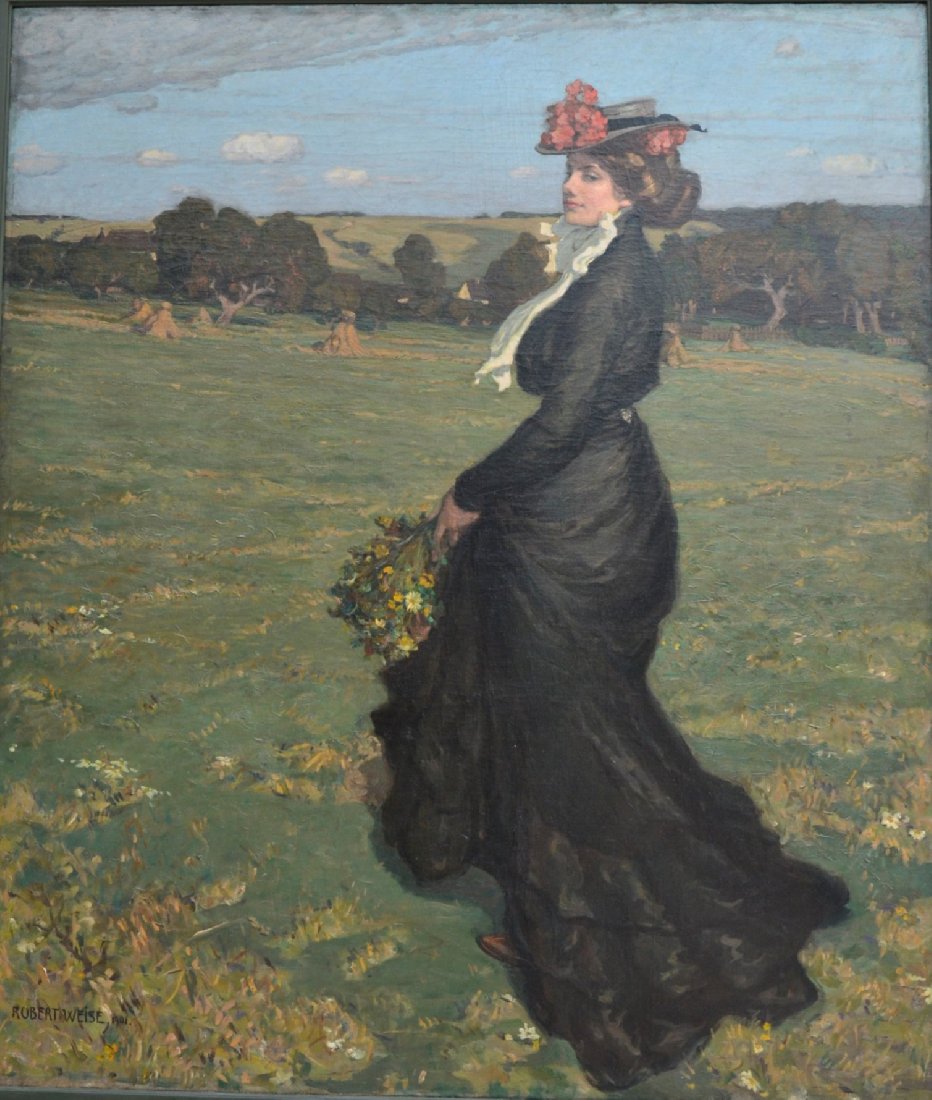Description:
Robert Weise (1870 – 1923) studied in Stuttgart, Dusseldorf and Paris. For years he traveled through Europe looking for artistic inspiration. From 1914 to 1918, he taught at the Kunstschule in Weimar. He was a member and co-founder of the Munich artists’ association Die Scholle, in which influences of Jugendstil, symbolism and naturalism merged. In his work he mainly dealt with portrait painting, inspired by Impressionism and the work of Diego Velázquez*.
Description of the painting:
The painting “Mieszczka” is one of the artist’s best works. It shows a young woman in a picturesque landscape. The titular mieszczka is depicted full-length, in en trois quarts (in three quarters). She is dressed in a floor-length black dress with long sleeves. At the back she has an ornate, long train fastened with a brooch. The costume is brightened by a white ruff around the neck. Her head is covered with a hat with a large round decorated with two small bouquets of red flowers. The dress in which the woman is dressed indicates her urban origin. Her head is turned towards the viewer. Attention is drawn to the eyes, which, looking at the observer, invite you to take a walk. The figure is shown in motion, as if taking a step. This is emphasized by the piece of dress held in her hand and the tip of the shoe sticking out from it. The dynamism is enhanced by the wind blowing the ruff. In her right hand the woman holds a bouquet of wild flowers. Probably gathered in the place where she is. The background is a meadow stretching from the bottom edge of the picture plane. Single flowers and patches of sunburned grass can be seen on it. Further away, there is a row of trees from between which buildings can be seen. The second plan is closed by a green elevation. The upper part of the picture plane is occupied by a blue sky with single clouds that seem to be flowing under the influence of the wind.
The painting is kept in muted colors with a predominance of green. The black dress sets the figure apart from the background, thus giving it primary importance. Through the figure of a woman on the meadow, the artist shows the way of spending free time at this time. It is an expression of his aesthetics, in which he combined influences of Jugendstil, symbolism and naturalism.


